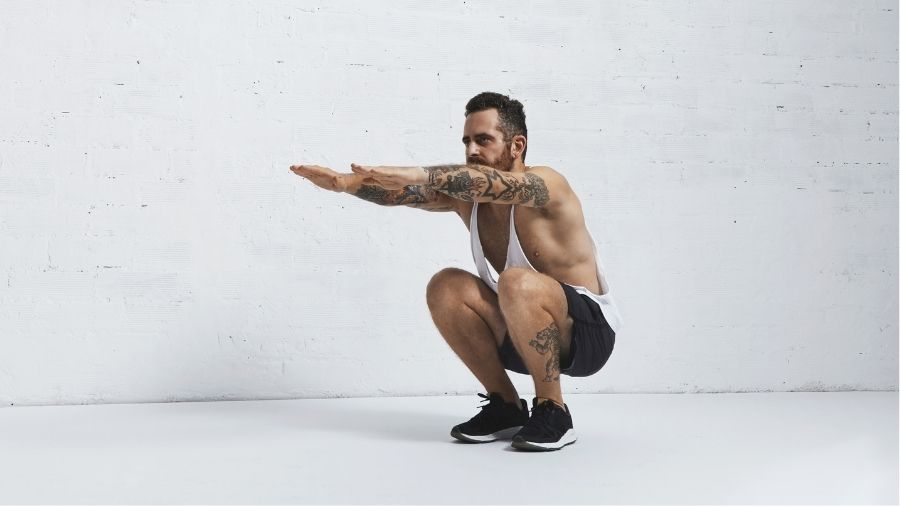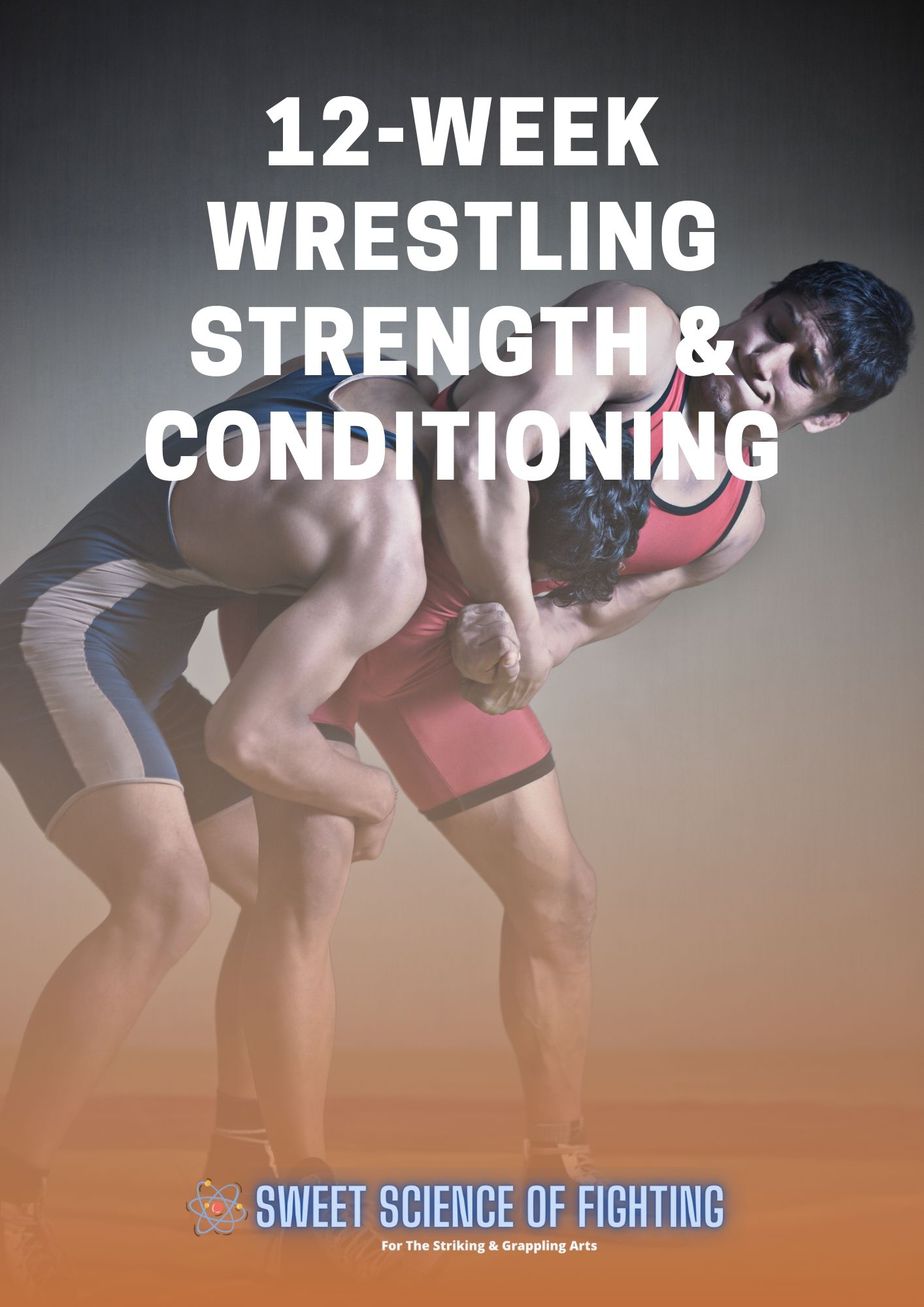It’s every wrestler’s worst nightmare. Being stuck at home thinking about all of the progress they may be missing out on. Global pandemics can do that. But I have a solution for you and have jam-packed this article with wrestling workouts you can do at home to get you off the couch and ready to ragdoll opponents.
If you are back on the mats but aren’t performing any training off the mats, then these wrestling workouts can supplement your wrestling training at home.
The Limitations Of Wrestling Workouts At Home
I’m going to assume you are performing wrestling workouts at home because you are not able to get to a wrestling gym or even a commercial gym for weight training. In a world where you can be stuck at home with a pandemic, this can happen at any time. So, I get it.
This means you will be limited in what you can do based on the space you have available, the wrestling equipment you have, and your current fitness level. So this week's plan of wrestling workouts at home will assume you only have yourself.
You may be surprised to know that you can get yourself in great shape with no equipment so when you get back on the mats, you haven’t lost much progress.
Wrestling Workouts At Home

Here are six different workout options that you can use at home to cover all of your wrestling strength and conditioning needs.
Shadow Wrestling
Shadow wrestling is the most underutilized form of wrestling training. It allows you to hone your technique while developing specific work capacity and conditioning for wrestling. No other conditioning modality can beat it. Depending on the intensity you do your shadow wrestling, you can target aerobic or anaerobic adaptations making it extremely versatile.
Low-intensity aerobic adaptations can be targets by keeping your heart rate between 130-150 BPM while performing your techniques. High-intensity anaerobic adaptations can be targeted by performing near maximal effort techniques for 20-40 seconds with 1-2 minutes of rest.
Here is a small list of techniques that you could use as part of your shadow wrestling workout. Some you will only be able to do if you have some mats at home.
Be as creative as you like. You can either flow and perform any technique based on what you are visualizing your opponent doing. Or you can perform a set number of each technique before moving on to the next technique.
5 Step Blueprint To Build A BJJ Strength Workout To Demolish Your Opposition
Learn how to plan your strength training to maximize transfer to the mats.
You can even use a timer and perform 3-5 minutes of each technique. Any variation that helps you shadow wrestle more often is one you should use.
Leg Circuits
It’s no secret wrestlers need insane work capacity in their legs. Strength is one thing. But having the capacity to last matches and tournaments and retain your explosiveness is another. These leg circuits will do just that.
This specific circuit was created by legendary coach Vern Gambetta. It goes like this:
The goal is to be able to perform five full circuits without stopping. This is brutal. Vern states that this is the prerequisite before moving to heavier lifting and high-intensity plyometrics. So getting to this level will ensure you’re ready to get after it for when you don’t need to workout at home.
Performing five circuits in a row is difficult when starting. So, you can perform various progressions to build to five full circuits. Here is Vern’s recommended progression:
Week 1: 3 circuits with 45 seconds between exercises and 3 minutes between circuits
Week 2: 4 circuits with 45 seconds between exercises and 2 minutes between circuits
Week 3: 5 circuits with 30 seconds between exercises and 90 seconds between circuits
Week 4: 5 circuits with 30 seconds between exercises and 60 seconds between circuits
Week 5: 5 circuits with 30 seconds between exercises and no rest between circuits
Week 6: 5 circuits with no rest between exercises and no rest between circuits
Plyometric/Jump Circuits
Plyometric/jump circuits follow a similar premise to Vern's leg circuits. But these provide more variety and allow you to move in different directions. You can perform double leg, single-leg, and even rotational movements to prepare the body for higher intensity activities.
The idea is these are performed extensively. Meaning smooth, rhythmic, and sub-maximal. This is to keep the intensity low and prepare the body for more strenuous work. Here are some examples:
10 seconds rest between exercises and anywhere from 1-4 circuits. You can rest 1-2 minutes between circuits. Here is a more advanced variation that includes rotations and single-leg jumps:
Mobility Circuits
Mobility circuits are another way to target the aerobic energy system using basic mobility exercises in a circuit or superset fashion. The secret is to pair standing mobility exercises with ground-based mobility exercises. For example:
Repeat x 3-5 with no rest. This is just one example. You have so many options you can create your own 20–30-minute mobility circuit routine and make fitness gains. Ideally, you’ll keep your heart rate between 130-150 BPM as long as possible.
Contralateral Circuits
Contralateral circuits were popularized by strength coach Cal Dietz. These are great low-level aerobic-style workouts as they don't isolate the lower or upper body. You gain full-body aerobic adaptations which you don't get during traditional cardio exercise like the stationary bike.
And all you need is an elastic band and a light dumbbell. Each exercise involves a contralateral element. Meaning opposite. So if you are performing a lower body exercise with the left leg, you will be performing an upper body exercise with the right arm. Here are some examples:
There are many more options you can use. Simply perform each exercise for a specified time between 15-30 seconds with 10-20 seconds between exercises. It should be done at an easy pace. You'll be surprised how quickly your heart rate can skyrocket. Try to keep it under 160 BPM.
Hypertrophy Ladders

I’m very fond of the hypertrophy ladder. It’s essentially calisthenic exercises (bodyweight) performed in a circuit fashion for reps to stimulate muscle growth and to get a conditioning effect. It’s not something I would use if you had a proper wrestling training schedule. But since you are stuck at home, this is great to mix in.
Creating your hypertrophy ladder is easy. Here are the guidelines to create your own:
Exercise | Set/Rep |
|---|---|
A1) Bodyweight squat | x10/15/20/25/20/15/10 |
A2) Push-up | x5/10/15/20/15/10/5 |
A3) Inverted or Band row | x5/10/15/20/15/10/5 |
Complete your first set of squats, then move to push-ups, then rows. After finishing rows, return to the squats for the next set and make your way through eat exercise. Finish the ladder without rest.
Calisthenics
Since you likely have no equipment at home, you will be relying on bodyweight for strength training. This is fine in the short term. But sometimes bodyweight isn’t enough when you’re strong. So here are some ways to increase the intensity of your calisthenics:
Remove Limbs
Performing push-ups with one leg or one arm places more stress on the upper body. Performing squats with one leg is harder than two. This is a simple way to increase the intensity of exercises.
Shift More Weight Over The Arms
This only works for the upper body. Elevate your legs during push-ups to shift more of your bodyweight onto your hands. As you get stronger, you can even perform handstand push-ups which is the ultimate test of upper body strength.
Extend The Range Of Motion
Again, this only works for the upper body. Elevating your hands during push-ups will make the exercise harder and result in more work being performed.
These are simple ways to make your calisthenics harder. You can also load a backpack filled with books to increase the load of both your lower and upper body exercises.
Wrestling Workouts Week Schedule
I've presented an array of different workout options. Now, I'm going to put it together into a weekly schedule to provide you with an example to work from.
Monday: Plyo/Jump Circuit + Calisthenics Strength Workout
Exercise | Set/Rep |
|---|---|
A1) Squat Jump | 2 x 10 |
A2) Pogo | 2 x 10 |
A3) Lateral Squat Jump | 2 x 10 |
A4) Pogo Forward | 2 x 10 |
A5) Sumo Squat Jump | 2 x 10 |
A6) Pogo Backward | 2 x 10 |
B1) Bulgarian Split Squat | 4 x 8-10 with 3-sec pause at the bottom |
C1) Decline Push-Up | 4 x 15-20 |
C2) Inverted Row | 4 x 10-20 |
D1) Single Leg RDL | 3 x 8/leg |
E1) V-Up | 3 x 15 |
E2) Russian Twist | 3 x 20 |
Tuesday: Shadow Wrestling Aerobic Capacity Workout
30-40 minutes of shadow wrestling with heart rate between 130-150 BPM. Keep a continuous pace. Break up the session with jump rope, contralateral exercises, and easy medicine ball throws.
Wednesday: Hypertrophy Ladder
Exercise | Set/Rep |
|---|---|
A1) Bodyweight squat | x10/15/20/25/20/15/10 |
A2) Push-up | x5/10/15/20/15/10/5 |
A3) Inverted or Band row | x5/10/15/20/15/10/5 |
Thursday: Calisthenics Strength Workout + Leg Circuit
Exercise | Set/Rep |
|---|---|
A1) Band Good Morning | 4 x 10 |
B1) Handstand Push-Up | 4 x 8-12 |
B2) Band Pull-Apart | 4 x 25 |
C1) Prone Superman | 3 x 15-20 |
D1) Bodyweight squat | 3 x 20 |
D2) Lunge | 3 x 10/leg |
D3) Step-up | 3 x 10/leg |
D4) Squat jump | 3 x 10 |
Friday: Shadow Wrestling High-Intensity Aerobic Intervals
2 x (5 x 60sec/60sec) w/ 3 min rest between sets. Heartrate around anaerobic threshold (approximately between 165-175 BPM). Here’s an example of how high-intensity shadow wrestling can look.
Saturday: Shadow Wrestling + Contralateral Aerobic Capacity Workout
30-40 minutes of shadow wrestling with heart rate between 130-150 BPM. Keep a continuous pace. Break up the session with jump rope and contralateral exercises.
Summary
Just because you’re stuck at home doesn’t mean you can’t prepare yourself for wrestling. These wrestling workouts at home will whip you into shape and have you ready to get back on the mats.
Become The Enforcer & Manhandle Opponents
12-Week Off-Season Wrestling Strength & Conditioning Program that will give you elite level strength & conditioning specifically for wrestling so you can dominate the mats.



